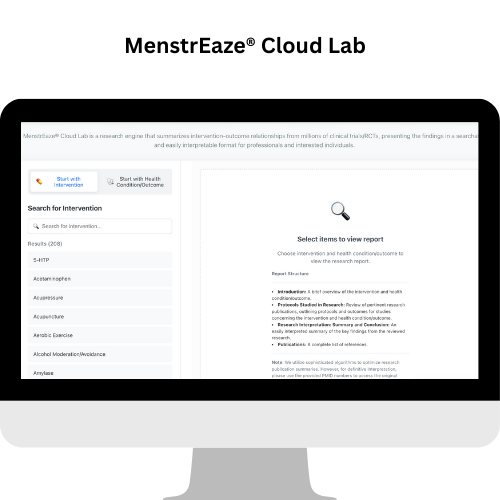1. Introduction
Menstrual cramps, medically known as dysmenorrhea, are a common and often debilitating symptom experienced by many women during their menstrual cycles. Characterized by throbbing or cramping pains in the lower abdomen, these cramps can significantly impact daily activities and overall quality of life. While various treatments exist, including over-the-counter pain relievers and hormonal therapies, there is growing interest in dietary interventions. One promising area of research is the consumption of omega-3 fatty acids. This article explores the relationship between omega-3 fatty acids and menstrual cramps, providing a comprehensive overview of the current scientific understanding and practical advice for those seeking relief.
2. Understanding Omega-3 Fatty Acids
Omega-3 fatty acids are a group of polyunsaturated fats essential for human health. They are termed "essential" because the body cannot synthesize them; thus, they must be obtained through diet. The three main types of omega-3 fatty acids are:
- Alpha-linolenic acid (ALA): Found primarily in plant oils, such as flaxseed, soybean, and canola oils.
- Eicosapentaenoic acid (EPA): Found in fish and other seafood.
- Docosahexaenoic acid (DHA): Also found in fish and seafood, DHA is particularly important for brain and eye health.
Omega-3 fatty acids are integral components of cell membranes and play crucial roles in cardiovascular, immune, and endocrine systems. They are involved in producing eicosanoids, signaling molecules that influence inflammation and other physiological functions.
3. Omega-3 Fatty Acids and Menstrual Cramps
3.1 Anti-Inflammatory Properties
One of the primary health benefits of omega-3 fatty acids is their potent anti-inflammatory effect. Menstrual cramps are partly caused by the release of prostaglandins, hormone-like substances that trigger uterine muscle contractions and contribute to inflammation and pain. Higher levels of certain prostaglandins are associated with more severe menstrual cramps.
Omega-3 fatty acids, particularly EPA and DHA, can modulate the production of prostaglandins. They compete with omega-6 fatty acids (which are more prevalent in typical Western diets) for the enzymes involved in prostaglandin synthesis. The prostaglandins derived from omega-3 fatty acids tend to be less inflammatory than those derived from omega-6 fatty acids. By shifting the balance toward less inflammatory prostaglandin production, omega-3s may reduce uterine contractions and alleviate menstrual pain.
3.2 Impact on Mood and Psychological Well-being
Menstrual cycles can also influence mood and emotional well-being due to hormonal fluctuations. Omega-3 fatty acids have been shown to have mood-stabilizing effects and may reduce symptoms of depression and anxiety. Improved psychological well-being can, in turn, make the perception of menstrual pain more manageable. Omega-3s influence neurotransmitter pathways, including serotonin and dopamine, which are involved in mood regulation.

4. Clinical Evidence Supporting Omega-3s for Menstrual Cramps
4.1 Randomized Clinical Trials
Several studies have investigated the efficacy of omega-3 fatty acid supplementation in reducing menstrual pain and improving related symptoms:
- Rahbar et al., 2012: In a double-blind crossover study involving women aged 18–22 with primary dysmenorrhea, participants received either omega-3 supplements or a placebo over three menstrual cycles. The study found a significant reduction in pain intensity among those who took omega-3 supplements, along with a decreased need for ibuprofen as a rescue medication. This suggests that omega-3 supplementation can effectively reduce menstrual pain severity and reliance on analgesics.
- Harel et al., 1996: This study focused on adolescents with dysmenorrhea. Participants received either fish oil supplements rich in omega-3 fatty acids or a placebo for two months. Results demonstrated a significant decrease in menstrual symptoms in the omega-3 group compared to baseline, indicating the potential benefits of omega-3s in younger populations experiencing menstrual cramps.
4.2 Systematic Reviews and Meta-Analyses
- Mohammadi et al., 2022: A systematic review and meta-analysis examined the impact of omega-3 polyunsaturated fatty acids on primary dysmenorrhea. The analysis concluded that omega-3 supplementation had a mild but significant effect on reducing the severity of menstrual pain. Interestingly, the highest effectiveness was observed at lower doses of omega-3s, and efficacy decreased with higher doses and increasing age of participants.
- Snipe et al., 2024: Another systematic review assessed the effect of omega-3 supplementation on dysmenorrhea pain and prostaglandin levels. The meta-analysis revealed a significant reduction in pain severity among women who took daily omega-3 supplements ranging from 300 to 1,800 mg over 2–3 months. Although most studies did not measure prostaglandin levels directly, the consistent reduction in pain and decreased use of analgesics support the anti-inflammatory role of omega-3s.
4.3 Quality of Life Improvements
- Samira et al., 2018: A randomized clinical trial investigated the effects of omega-3 supplementation on premenstrual symptoms and health-related quality of life in women aged 20–35. The study found that omega-3 supplementation significantly reduced premenstrual symptoms, including mood swings, bloating, and breast tenderness, and improved overall quality of life.
5. How to Incorporate Omega-3 Fatty Acids Into Your Diet
5.1 Dietary Sources
Increasing omega-3 intake can be achieved through dietary changes:
- Fatty Fish: Salmon, mackerel, sardines, trout, and tuna are rich sources of EPA and DHA. Aim for at least two servings of fatty fish per week as recommended by health guidelines.
- Flaxseeds and Chia Seeds: These seeds are high in ALA. They can be added to cereals, smoothies, yogurt, or baked goods.
- Walnuts: A good plant-based source of ALA, walnuts can be eaten as snacks or added to salads and dishes.
- Plant Oils: Flaxseed oil, soybean oil, and canola oil contain ALA and can be used in dressings or cooking at low temperatures.
- Fortified Foods: Some eggs, dairy products, and bread are fortified with omega-3s.
5.2 Supplements
For those who have dietary restrictions or do not consume enough omega-3-rich foods, supplements are available:
- Fish Oil Supplements: Contain EPA and DHA. Choose high-quality products that are third-party tested for purity and potency.
- Algal Oil Supplements: A plant-based source of DHA and EPA, suitable for vegetarians and vegans.
- Dosage: Common dosages range from 500 to 1,800 mg of combined EPA and DHA per day. Consult a healthcare provider to determine the appropriate dosage for individual needs.

5.3 Considerations and Precautions
- Consult a Healthcare Provider: Before starting any supplement regimen, especially if you are pregnant, nursing, have a medical condition, or are taking medications that affect blood clotting.
- Possible Side Effects: High doses of omega-3 supplements may cause gastrointestinal discomfort, nausea, or increased bleeding risk.
- Quality Matters: Choose reputable brands to ensure the supplements are free from contaminants like mercury and other heavy metals.
6. Conclusion
Omega-3 fatty acids have emerged as a promising nutritional approach for alleviating menstrual cramps and improving overall menstrual health. Their anti-inflammatory properties, impact on prostaglandin synthesis, and potential mood-enhancing effects contribute to their efficacy in reducing menstrual pain and associated symptoms.
While more extensive research is needed to fully understand the optimal dosage and long-term effects, current evidence supports the inclusion of omega-3 fatty acids as part of a holistic strategy for managing menstrual discomfort. Incorporating omega-3-rich foods into the diet or considering supplementation under the guidance of a healthcare professional may offer significant benefits for women seeking natural relief from menstrual cramps.
By embracing the potential of omega-3 fatty acids, women can take proactive steps toward enhancing their menstrual well-being and overall quality of life.






